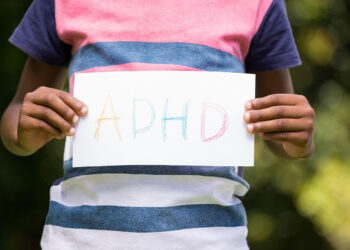- Ice hockey players’ CTE risk increased with more years of play.
- Nearly all brains donated by professional hockey players had evidence of CTE.
- Donors represent a subset of athletes who often have symptoms of brain disease while alive.
The number of years an athlete played ice hockey correlated with his risk of developing chronic traumatic encephalopathy (CTE), a study of deceased male brain donors found.
The study included brains from 77 hockey players who died at a median age of 51 years. Overall, 54.5% had CTE, including 27 of 28 professional players.
Evidence of CTE — a degenerative brain disease that can be diagnosed only at autopsy — was found in 19.2% of donors who played hockey for less than 13 years, 51.9% of those who played for 13 to 23 years, and 95.8% of those who played for more than 23 years, reported Jesse Mez, MD, MS, of Boston University, and co-authors.
Odds of CTE increased by 34% for each year played (OR 1.34, 95% CI 1.15-1.55, PJAMA Network Open.
“Ice hockey players with longer careers not only were more likely to have CTE, but they also had more severe disease,” Mez said in a statement.
“Enforcers have dominated the CTE conversation, but our findings provide the most evidence for the cumulative amount of play as the predominant risk factor for CTE,” Mez pointed out. “Enforcers had about twice the odds of developing CTE, but the takeaway here is that non-enforcers are getting CTE as well.”
Enforcers — also known as goons or fighters — have an unofficial role at elite levels to react aggressively to perceived violent or dirty play on the ice, often initiating physical fights against offenders, the researchers noted.
Ice hockey is the third major sport — after American football and rugby — in which evidence suggests a dose-response relationship between years of play and CTE risk.
“Ice hockey players skate quickly, and checking leads to impacts with other players, the ice, boards, and glass,” Mez observed. “We think years of play is a proxy for these impacts that are harder to measure directly, but are likely what are leading to the disease.”
In 2023, National Hockey League (NHL) Commissioner Gary Bettman said he was not convinced there were links between CTE and playing NHL hockey.
In the current study, 18 of 19 NHL players whose brains were donated had evidence of CTE. Donated brains represent a subset of athletes: donation often occurs because a player exhibited symptoms of brain disease while alive.
Mez and colleagues assessed male donors in the UNITE and Framingham Heart Study brain banks whose primary exposure to repetitive head impacts was from ice hockey.
Brain data were collected from July 1997 through January 2023. Suicide was the most common cause of death among donors, followed by neurodegenerative disease.
Overall, 28 brains were from professional hockey players (19 NHL and nine non-NHL professionals); 28 brains were from college, junior, and semi-professional players, and 21 were from youth and high-school players.
Nearly all (96%) donated brains from professional players had CTE pathology, as did 46% of those from donors who played college, junior, and semi-pro hockey, and 10% of youth and high-school players.
The number of years spent playing ice hockey was associated with cumulative phosphorylated tau burden (SD increase per 1-year increase = 0.037, P P=0.04) and a 0.045 SD increase (P
Enforcers had an average of 22.9 years of play. In total, 18 of 22 enforcers were diagnosed with CTE; however, the difference between enforcers and non-enforcers was not significant after accounting for years of play. In the NHL, enforcers had a higher mean number of penalty minutes and fights per game than non-enforcers, as expected.
The study is the largest of ice hockey players and CTE, but the sample size was too small to analyze CTE stages, Mez and co-authors acknowledged. The cohort included white male brain donors exclusively. Body checking rules differ in men’s and women’s ice hockey and findings may not apply to female players.
Disclosures
This study was supported by the National Institute of Neurological Disorders and Stroke, the National Institute on Aging, the National Heart, Lung and Blood Institute, the Department of Veterans Affairs, the Department of Defense, the Alzheimer’s Association, the National Operating Committee on Standards for Athletic Equipment, the Nick and Lynn Buoniconti Foundation, the Concussion Legacy Foundation, the Andlinger Foundation, World Wrestling Entertainment (WWE), and the National Football League (NFL).
Mez reported receiving grants from the NIH.
Co-authors reported relationships with the NIH, NFL, WWE, NFL Players Association, Oxeia Biopharmaceuticals, StataDX, World Rugby, All Elite Wrestling, Signant Health, Novo Nordisk, Davos Alzheimer’s Collaborative, the Concussion Legacy Foundation, Eisai, Psychological Assessment Resources, King-Devick Technologies, Life Molecular Imaging, the Rainwater Charitable Foundation, the Michael J. Fox Foundation, Oxford University Press, and the American Medical Association.
Primary Source
JAMA Network Open
Source Reference: Abdolmohammadi BA, et al “Duration of ice hockey play and chronic traumatic encephalopathy” JAMA Netw Open 2024; DOI: 10.1001/jamanetworkopen.2024.49106.
Source link : https://www.medpagetoday.com/neurology/headtrauma/113223
Author :
Publish date : 2024-12-04 22:43:19
Copyright for syndicated content belongs to the linked Source.














